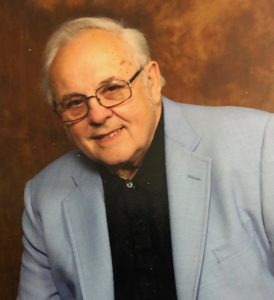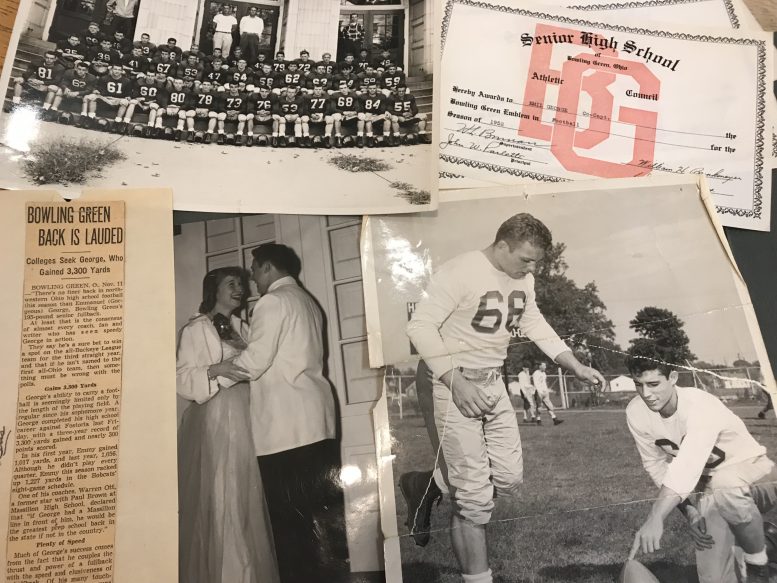By DAVID DUPONT
BG Independent News
Bowling Green lost a part of its sports history last week with the passing of Emil George. The 1953 Bowling Green High School graduate was a football star and when he died at age 84 on July 15 six of the records he set from 1950-1952 still stand.

As a fullback he holds the records for touchdowns in a season, 16, set in 1950; touchdowns in a career, 39, 1950-1952; points in a season, 113, 1950; points in a career, 275, 1950-1952; rushing yards in a game, 302, 1950 against Napoleon; and rushing yards in a career, 3,115, 1950-1952.
His grandson Joseph Weaver said that last November, the Bowling Green High School athletic director Dirk Conner stopped by to confirm the records. Any memorials should benefit the Bowling Green High Athletics.
His grandfather, though, didn’t talk much about his football achievements.
When he did, Weaver said, “he always deflected attention to the other players. He’d say: ‘That’s because I had a line you wouldn’t believe. That helped me do that. You wouldn’t believe the boys I played with.’”
Weaver goes through a scrapbook of his grandfather’s life with team photos taken outside the high school when it was on the corner of West Wooster and South Grove. There are certificates showing the varsity letters he earned in track as well as football.
There’s a story from 1973 when he scored a hole-in-one at the Sugar Creek Golf Course in Elmore.
That’s something he would talk about, Weaver said. When he struck the ball, all he knew was that it had disappeared, and he wasn’t sure where it’d gone.
According to a Sentinel-Tribune story at the time, when he realized it was in the hole, he refused to take the ball out. His brother, Gus George, had retrieve it for him.
The scrapbook also documents his involvement in bowling.
George’s football career didn’t last long after Bowling Green. He was recruited to play for Ohio State under coaching legend Woody Hayes.
As a freshman George was assigned to the practice squad running plays against the varsity. Among those on the team at the time was future Heisman Trophy winner Howard “Hopalong” Cassady.
George even played handball with Hayes.
But a serious neck injury ended his football career. He quit college and returned to Bowling Green where in high school fairy tale fashion, the star football player married the head cheerleader, Lois Warren, in 1954. They had a daughter Terri Lynn, Weaver’s mother.
George’s early life, though, was rough. He was born and spent his childhood in poverty in Toledo. He attended Bowling Green High School because he was a resident of the Wood County Children’s Detention Home.
He told that story to reporter Jan (Larson) McLaughlin for a 1995 article in the Sentinel-Tribune. He grew up in “filth and squalor,” George said at the time.
Coming to Bowling Green allowed him to turn his life around. He lived with foster families in town, including at the time of his engagement with BGSU football great F.G. Skibbie.
Weaver said his grandfather remained well connected in BG, and would mention how he got a utility pole situated to make it easier for him to get out of his driveway.
It was an era, Weaver said, that doesn’t exist anymore.
George would tell his grandson: “I used to be able to get anything I wanted in the city, but they’re all dead.”

